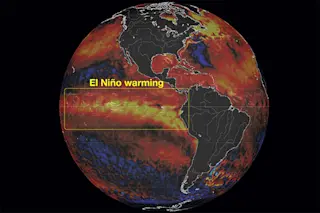As you may have heard, the El Niño that has been contributing to severe weather in California and elsewhere is expected to fade between April and June. Moreover, its sibling, La Niña — which also can have a big impact on our weather — stands a good chance of taking center stage in the fall.
But does this means a significant change in weather patterns will be happening soon? That's what the Weather Channel recently told its viewers: “El Niño giving way to La Niña means a warmer than average spring for most of the country. And the new outlook...shows most of the northern tier Rockies and Plains will see warmer than average temperatures.”
A Weather Channel outlook for spring says El Niño is transitioning to La Niña, and this will bring warmer than average temperatures across most of the United States, including much of the southern tier of states ...














